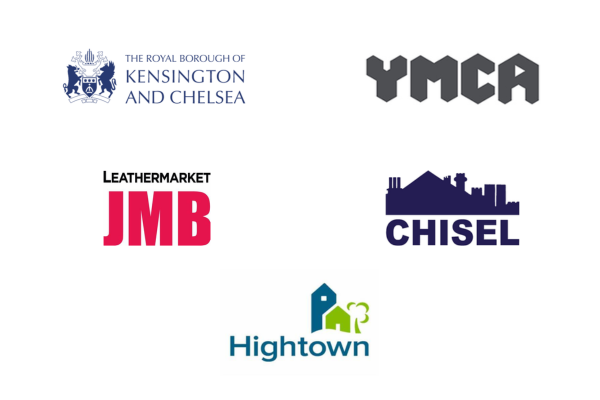With only six months left to go until The Procurement Act kicks in in October, we’re preparing for the changes and updating our processes to suit. We’re also continuing with our blog updates for customers and contractors. Each will focus on specific changes under the Act – we’ll cover what you should be doing to prepare, as well as how we’re updating our processes to meet the new regulations.
Firstly, we’re looking at Frameworks, Open Frameworks and Dynamic Markets. What are they? And how are they different to current purchasing models?

The new regulations replace frameworks and dynamic purchasing systems with three new purchasing tools: frameworks, open frameworks, and dynamic markets. We’ve included a brief description of each of the models below.
- Framework: These remain similar to Frameworks under the current regulations. It’s an arrangement where an organisation (in our case SEC) identifies a shortlist of suppliers who can deliver certain works or services. Then whilst it’s live, customers can “call-off” individual contracts from the framework.
- Open Frameworks: A new type of framework which allows for a series of framework awards which can be reopened for competitions during the framework term.
- Dynamic Market: This is a new name for what is currently a “Dynamic Purchasing System (DPS)”. A Dynamic Market will act as a pre-approved list of suppliers that have already been assessed and satisfy the conditions set out by the Contracting Authority or Framework Provider. Current DPS’s are designed for off the shelf services. Dynamic Markets have removed that requirement and can be used for any service or supplies.
What are the main differences between the new models? And, why would a customer choose one over another?
We’ve highlighted the main differences between the new models below:
| Framework | Open Framework | Dynamic Market | |
| What is the equivalent under PCR 2015? | Framework | There isn’t one – this is a new concept. | Dynamic Purchasing System (DPS) |
| What’s the framework term? | 4 years or less* | 8 years** | No express limit |
| Is the model open to new suppliers? If so, when? | Once awarded it is then closed to all new suppliers | Yes – but only at specific times. The framework must re-open at least once in first 3 years, then at least once in next 5 years | Yes – it is always open to new suppliers |
| Are direct awards allowed? | Yes | Yes | No |
| What fees can be charged? | A fixed percentage of the estimated value of any contract awarded | A fixed percentage of the estimated value of any contract awarded | A fixed percentage of the estimated value of any contract awarded***
|
| Where in the Procurement Act are in the rules set out? | Sections 45 to 48 | Section 49 | Sections 30 to 40 |
*unless authority considers “nature of the goods, services or works to be supplied” means that a longer term is required. 8 y+ears is the general limit instead of 4 for defence and security of utilities frameworks. **drafting indicates FIXED term rather than maximum. *** not permitted on utilities dynamic markets.
A Contracting Authority or Framework Provider may choose to use an Open Framework over a traditional Framework if they are looking to “award successive frameworks on substantially the same terms.” In this case the framework scope and coverage must remain relatively the same for each iteration of the framework.
In this case an 8-year term would be permitted. The framework schedule must abide by these timescales:
- The second framework must be awarded within the first three years after the award of the first framework.
- The third framework must then be awarded within five years of the second framework.
In terms of Dynamic Markets, the main difference is that they can now be used for any type of supplies or service.
What does this mean for current frameworks and dynamic purchasing systems?
Don’t worry, Contracting Authorities can still call-off from current frameworks and DPS’ until they expire. New frameworks and DPS’s procured before October 2024 must be procured under the current regs. Any new frameworks or contracts procured from October onwards will be under the new regulations.
What is SEC doing to prepare for the changes? And, will we be looking at introducing open frameworks in the future?
We’ve created a Reform Plan which covers a detailed list of actions between now and October 2024. This includes an internal training plan for all our colleagues. Team members are completing the Knowledge Drops and have signed up with the Government Commercial College in readiness for their E-learning modules.
We’ve reviewed all Framework procurements in the pipeline for this year. From here we know which will fall under the current regulations, and which ones will fall under the new ones.
Open Frameworks is an interesting concept. And we’ve committed to exploring this in more detail ahead of October. We’ll update you on our thoughts ahead of the new Regs going live.
We’ll be publishing a roadmap of our preparations to customers and suppliers in June.
Interested in learning more about Procurement Reform? Join us at Procurement AM on 25 April. We’ll be exploring the evolving procurement landscape and ensuring your prepared for the upcoming changes. Learn more and register: Procurement AM – South East Consortium.
We’re also running a contractor focused session on 11 July at the AMEX Stadium, Brighton. Learn more and register: Bid Better on the Road (Sussex) – Contractor Training – South East Consortium
We’re also publishing regular news posts on our website. View them here: Latest Updates on UK Procurement Reform – SouthEastConsortium
Alternatively, subscribe to our email newsletters here.





